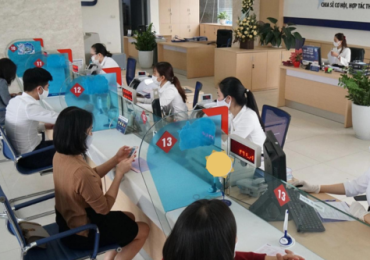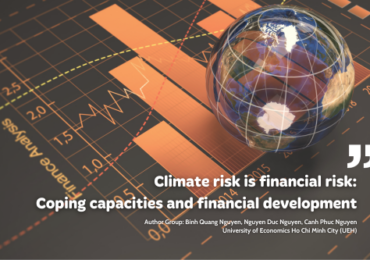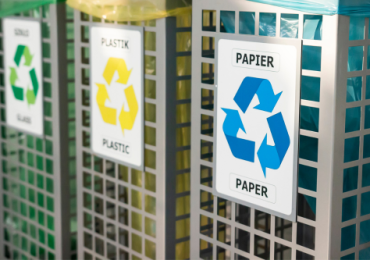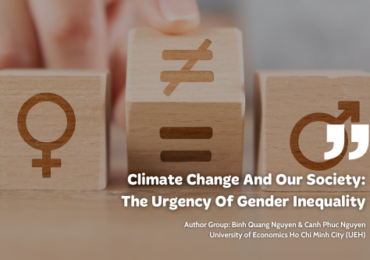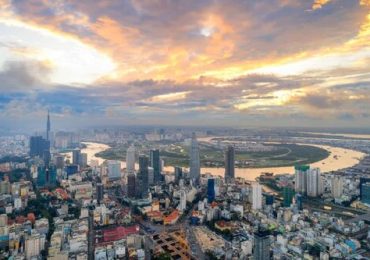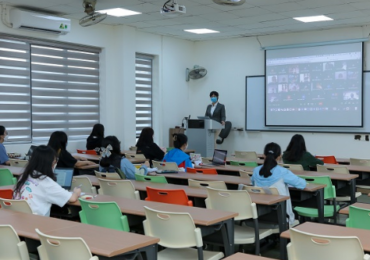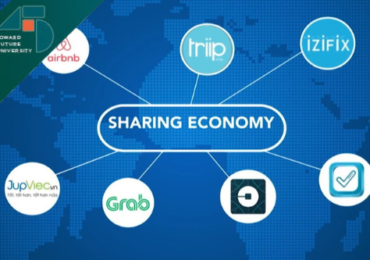Social Policy Responses to the Covid-19 Pandemic in Some Countries (Part 1)
28 December, 2023
Recently, to limit the negative impacts of the COVID-19 pandemic, most countries in the world, in addition to health policies, have implemented social policies. On the other hand, the extent regarding the effectiveness of these policies is not the same. In this article, the authors from University of Economics Ho Chi Minh City (UEH) propose some social policy responses in some countries; on this basement, in order to draw some lessons for Vietnam to be able to cope with the future epidemic crises.
In part 1 of the article, let’s explore the social policy response to the COVID-19 pandemic in some countries around the world.

The importance of social policies
The Covid-19 pandemic – an infectious disease pandemic – has caused the most serious public health crisis in Vietnam and globally. With its rapid spread and wide scope of infection, the Covid-19 pandemic has caused negative impacts on the country’s socio-economic development and people’daily lives. Facing these challenges, the Government and other socio-political organizations in Vietnam as well as in many countries around the world have established strong command and control mechanisms and launched responses against the crisis to control the epidemic and protect people’ health as well as that of the community groups in the world. These measures have worked towards the varying degrees in different outbreaks of the pandemic. The governments of those countries have proactively implemented many important policies in the medical and non-medical fields listed as: travel restrictions, blockade quarantine, emergency state declaration, curfew usage, social distancing implementation, crowded event cancellation, closed schools and less important service and business establishments, encouraging people to raise their awareness of disease prevention like wearing masks, limiting going out in case of unnecessity; at the same time, changing their operating model, moving business, studying, and working from traditional to online format and so on. Although medical and non-medical measures are very important to control the spread of the pandemic in the places having not enough vaccine, they cannot promote positive effects without the synchronization of social policies (including social security policies, social subsidies and so on) to relieve anxiety regarding the burdens of social welfare concerning financial burden towards seeking medical treatment and stabilizing life.
Medical and non-medical measures, when tightened, cause various losses to people whose livelihoods are not guaranteed. Those losses are inversely proportional to their willingness to comply as well as their consensus towards health measures once the epidemic lasts long and is difficult to control. On the contrary, if medical and non-medical measures are not strong enough to force people to keep their distance despite full livelihood support, this fact will lead to an uncontrollable spread of the epidemic.
In 2020, Vietnam did not pay much attention to social support policies because of its success in controlling the epidemic. Nevertheless, in the fourth outbreak (starting on April 27, 2021), the situation is different. Continuing to maintain the blockade becomes increasingly challenging when people do not have the basic conditions to stay at home. Keeping distance has become secondary to the urgent need to live and to survive; therefore, people have found additional ways to disobey distancing regulations for making a living.
Impacts of the COVID-19 epidemic on the economy and the society
* Impacts on the economy
The COVID-19 epidemic has contributed to the global economic recession. Restrictions and blockades have disrupted global supply chains, affecting production, exports and investment. Many countries have recorded large GDP declines, increased unemployment rates and declines in workers’ income.
Restrictions and suspensions of business activities have reduced international trade. The export industries, especially textiles, tourism and freight, have suffered heavily. The COVID-19 epidemic has caused major fluctuations in the financial and the stock markets. The value of stocks and stock indexes plummeted, causing instability and losses for investors and investment funds. The fact that many countries have had to increase spending and to provide economic stimulus packages so as to minimize the negative impact of the epidemic leads to the increased public debt and puts pressure on the national budget in the long term.
* Impacts on the society
The COVID-19 epidemic has caused a public health crisis, placing great pressure on the health care system. Hospitals and medical facilities face overcrowding and shortages of medical resources. Social restrictions, listed as social distancing, lockdowns and travel bans, have caused isolation and limited social activity. This has an impact on the psychological situation, causes stress and affects social connection.
In terms of education, COVID-19 has closed thousands of schools globally, causing disruptions in the education system. The transition to online and distance learning has created challenges for students, teachers and parents. In addition, social restrictions and economic difficulties have created a favorable environment for crime and domestic violence. Loneliness and pressure from the epidemic situation can lead to an increase in law violations and domestic violence. In addition, the COVID-19 epidemic causes serious psychological impacts, including anxiety, stress, depression and psychological distress. It is the anxiety regarding health, the economy and the future that has affected the psychological state and mental health of a lot of people.
Social policy responses in the United States, India and Germany towards the COVID-19 pandemic
* USA
When the COVID-19 pandemic occurred, the federal government dominated social policy because the states lacked the financial resources to apply large social policy responses. The federal government authorized more than $2 trillion as additional spending to respond to the pandemic only in March and April 2020, accounting for approximately 10% of GDP (Anderson et al., 2020). Expenditure components include subsidies for individuals of 1,200 USD/adult and 500 USD/child in addition to a huge increase in insurance benefits for the unemployed.
In addition to expanding support for businesses, the US government applies a short-term employment support program, in which businesses can receive loans equivalent to grants to pay non-working employees (Paycheck Protection Program). As a result, during this period, although the United States experienced the largest increase in unemployment in recorded history (a 14% increase only in April 2020), the poverty rate decreased significantly by 21% (Han et al., 2020).
In August and September, 2020, the fact that the most important of these temporary support packages expired increases the pressure on non-medical interventions when people and businesses lost their fund support (Rocco et al., 2020). This story comes from the initial assumption of policymakers that the federal government will effectively control the COVID-19 pandemic and the country will return to normal economic life in the fall of 2020.
Nevertheless, this is a wrong assumption as the COVID-19 epidemic continues to rage strongly. This failure to innovate social policy responses to the spreading virus situation leaves the United States facing a dire fall of 2020 and an economic recession. As the epidemic kept on spreading, the activity levels in the sectors of the economy fell as people stayed away from bars, restaurants, retail and tourism. By October 2020, the United States was locked in a debate regarding the effectiveness of non-medical interventions listed as business closures, travel restrictions, or wearing masks. The White House chief of staff had to admit that they would not be able to control the pandemic, the public health infrastructure was largely overwhelmed and the economy fell into recession (Cole, 2020).
* India
India, initially, made headlines thanks to its rigorous public health response to the pandemic. However, the federal government failed to coordinate socio-economic priorities compared to those of health upon lifting the nationwide embargo, leaving states responsible for managing and responding to the COVID-19 pandemic.
Social policies have failed to address individuals’ frustrations with limitations in employment and meeting basic needs: food, housing and cash. As a result, the country faces an uncontrolled spread of the disease as well as heavy economic losses. Non-medical interventions listed as business closures, travel restrictions and so on cause serious social consequences, especially for the poor.

Within a week of reopening, the number of infected cases in India increased dramatically. Source of collected photos
One of the major social policy actions, focusing on India, was the stimulus package worth 307 billion USD in March 2020 after the nationwide blockade. Funding of approximately $24 billion is intended to assist all individuals in ensuring access to food and gas. This stimulus package was successful in allowing those receiving financial relief packages to survive for some time in a temporarily frozen economy.
However, the issue of direct cash transfer – which avoids delays – has not been available to everyone as complex regulations listed as identification, interstate travel for self-employed worker identification is one challenge. (Economic Times, 2020b). In a large, populous country like India, it is absolutely difficult to accurately determine who actually receives money in the support package and who does not. As a result, the well-intended centralized social policy has not brought the desired results.
* Germany
Social policy responses in Germany have benefited the economy at not only the macro level but also the micro level. Europe’s largest economy has launched a historic rescue package of 353.3 billion euros (BMF, 2020) to control unemployment and vulnerable groups in need of protection (single parents, pensioners, children and so on)
Germany is one of the countries with a stable, strong social policy system listed as income support, programs and unemployment insurance with the purpose of limiting the recession impact on people’ lives and the wide economy. Therefore, the public health measures, in addition to politics, taken by Germany to fight the pandemic have led to many social and economic outcomes (Iskan, 2020). During the COVID-19 pandemic, the Government, to reduce negative impacts, has established social policy actions including two social protection packages with the goal of mitigating the economic and social consequences of the epidemic. On March 22, 2020, Chancellor Angela Merkel ordered a nationwide blockade as well as the closure of all restaurants, bars, cafes and businesses in the personal care sector (Bundesregierung, 2020).
These strict non-medical interventions (listed as business closures, travel restrictions, mask-wearing) and other economic shocks related to the pandemic have created the problems that Social Policy intended to solve. On March 25, 2020, the German government launched the largest aid package in history at 353.3 billion Euros (approximately 9% of GDP) and guarantees totaling 819.7 billion euros (BMF, 2020) as the largest amount in the world at that time (Jerzy, 2020) so as to protect the office workers and the freelance workers. This financial support effort has helped ensure necessary social policy actions across the country, resulting in low unemployment (Urmersbach, 2020) and GDP losses lower than that of the EU average as a result of the pandemic (Statista, 2020b).
On March 27, 2020, the social protection package was implemented with measures to simplify the process to achieve additional benefits listed as child benefits, subsidies for social services, and continued employment post-retirement jobs with the extension of the maximum term for some workers. On April 28, 2020, the second Social Protection Package was implemented to help unemployed seasonal workers ensure their lives; to improve conditions for receiving short-time work benefits, to expand the right to unemployment benefits and to continue the payment assurance of benefits for the orphans.
Other financial protections for individuals which include support, child allowance, single parent support, money and basic security are essentially an expansion of existing programs, providing more financial support to vulnerable groups (children, single parents and those with limited incomes).
COVID-19 support for commercial and freelance companies is the largest aid package with the important goal of supporting all types of businesses (newly-established companies, large enterprises, small-and-medium enterprises, under 10 employees, freelance business, self-employed). A total of 70.4 billion euros in aid was approved on October 13, 2020 (Bundesministerium für Wirtschaft und Energie, 2020). Money has been allocated to the economic stabilization funds, quick credit, special programs, commodity credit, insurance and export credit guarantees, tax measures and so on.
Germany’s emergency social policy has demonstrated its effectiveness. Administrative burdens have been removed and limited while the support achieved across most categories (individuals, families, businesses of all sizes and infrastructure), the unemployment rate has not increased (the similar case compared to other countries) as well as the immediate financial assistance is expected to speed up capital disbursement and limit administrative burdens. Thanks to the comprehensive support package for commercial and freelance companies, the unemployment rate increased compared to 2019 but not significantly.
Author group: Dr. Đỗ Lâm Hoàng Trang, MSc. Hoàng Xuân Sơn – Faculty of Political Ideology, University of Economics Ho Chi Minh City (UEH).
This is an article in the series of articles spreading research and applied knowledge from UEH with the “Research Contribution For All – Nghiên Cứu Vì Cộng Đồng” message, UEH cordially invites readers to watch the next Newsletter ECONOMIC No #102.
News, photos: Author Group, UEH Department of Marketing and Communication


